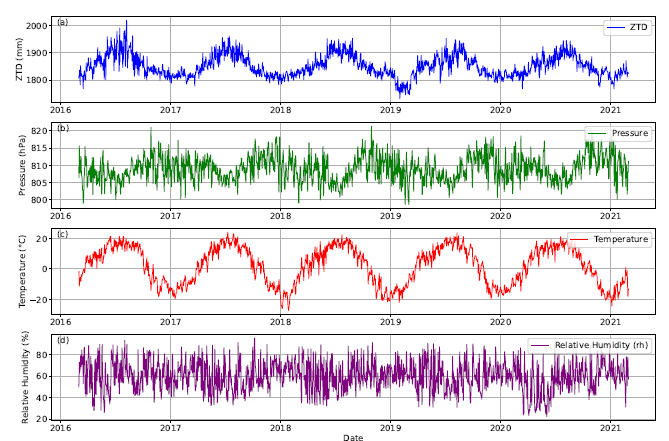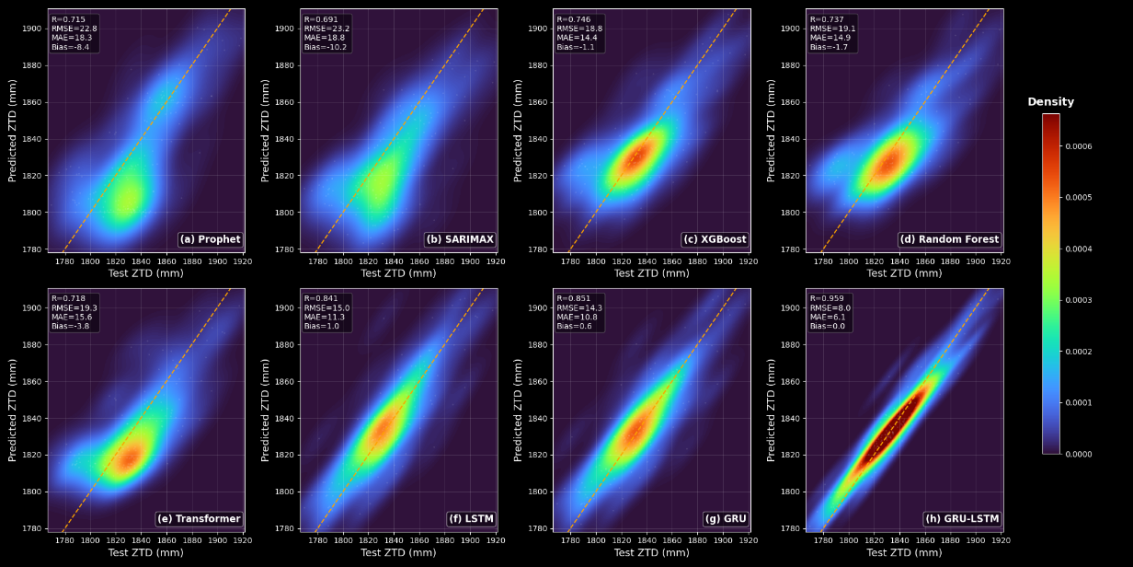

AI Atmospheric Calibration Precision for the NanShan 26-m Radio Telescope
Electromagnetic waves slow down as they pass through the Earth's atmosphere due to variations in air density and water vapor content, resulting in what is known as "tropospheric delay." This delay is considered a major source of error in Very Long Baseline Interferometry (VLBI) and Global Navigation Satellite System (GNSS) positioning. Like an "invisible lens," it causes signals to bend slightly and lag in the atmosphere, thereby affecting measurement accuracy. Accurately modeling and forecasting this delay has become an important challenge in the fields of astronomical observation and geodeticmeasurement.
Using multi-year GNSS and meteorological dataobtained from the NanShan 26-meter Radio Telescope, a research team led by senior engineer LI Mingshuai at the Xinjiang Astronomical Observatory (XAO), Chinese Academy of Sciences, developed a hybrid deep learning model that combines a Gated Recurrent Unit (GRU) and a Long Short-Term Memory (LSTM) network.
The model represents an important branch of artificial intelligence and can automatically learn the patterns of atmospheric delay variations from large volumes of data, achieving high-precision short-term forecasting of the Zenith Tropospheric Delay (ZTD).
The results have been published in Research in Astronomy and Astrophysics.
By conducting spectral analysis on long-term GNSS observations at the Nanshan station, the researchers found clear annual and semi-annual cycles in ZTD variation, with higher delays in summer and lower in winter. These variations closely correlated with temperature and water vapor content: the warmer and more humid the atmosphere, the greater the signal delay.

Figure 1. Relationship between ZTD variation and meteorological parameters
To address the limitations of traditional empirical models that struggle to capture complex nonlinear behaviors, the researchers adopted a deep learning architecture in which the GRU extracts short-term dynamic features while the LSTM captures long-term trends. By combining the two, the “hybrid neural network” effectively models both short-term fluctuations and seasonal regularities in atmospheric delay. Results show that the model achieves a prediction error of only about 8 millimeters and a correlation coefficient of 96%, significantly outperforming conventional statistical and single-network approaches.

Figure 2. Comparison of prediction accuracy among different models
The high-precision forecasts of tropospheric delay can substantially improve atmospheric phase calibration for VLBI observations, enhance radio source positioning and baseline solutions, and provide more accurate meteorological support for millimeter-wave astronomy. Moreover, the results have broad applications in precipitable water vapor (PWV) retrieval and weather forecasting. This study demonstrates the potential of artificial intelligence in atmospheric calibration for radio telescopes and lays a technical foundation for high-frequency operations of the Qitai 110-meter Telescope (QTT) and future multi-station interferometric observations.
Attachment Download: